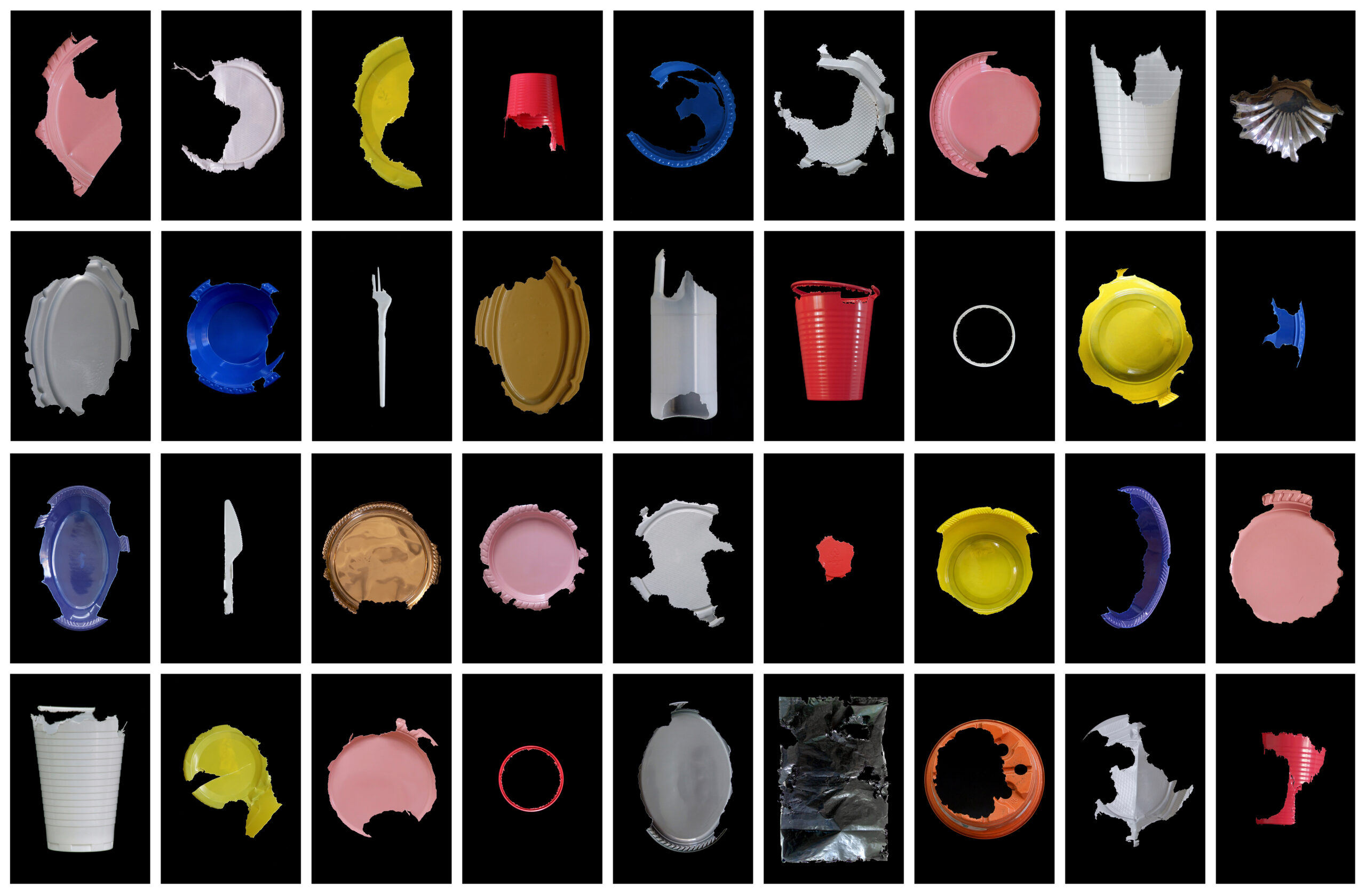
For the duration of the project, Goldstein kept a group of gerbils in his studio and experimented with the randomness of the shapes their animal needs created: from their gnawing teeth’s reshaping of plastic utensils to the remnants left in the sawdust they were living in. The humor of relaying artistic “chance” to the animals is not lost: the gerbils’ work is shown in enlarged, high-definition slides, and the random debris from the floor they once lived on becomes a patterned, fixed surface.
The interest in process, and introduction of random elements into an ordered method, which is present throughout Goldstein’s practice, is brought to an extreme here: the artist calls the resulting works his own sculptures, even though they were “created” by the rodents. The process itself is ironically idealized in the “sediments” of the gerbils’ living space, presented like layers of archaeological findings. Or is the reference here to the artist’s studio, where the gerbils had lived? He reclaims control and ownership of the dirty process that took place in the studio, where he owns every action, artistic and otherwise. It follows that he is free to develop the “raw materials” with infinite potential for growth in various media, as he does in sculpture, photography and digital media.
The work not only discusses authorship in artistic production but also investigates the forces that move today’s consumer culture at large. Unlike studio assistants, the gerbils are not directed by the artist, but like them they receive their sustenance from him in return for creative work. The piece comically deals with creative economies: contemporary culture’s transient nature is constantly confronted by art’s self-understanding as eternal, beyond worth and thus beyond hourly compensation. Even though the artworks were created in a few minutes of chewing, the plastic utensils will take decades to decompose, and their presentation draws connections to archaeological modes of presentation, in which “findings” are preserved for generations and treated in essence like artwork in terms of preserving their materials against natural deterioration. Within these methods of production and display, what is the artist’s role: the enabler, the framer, the feeder?